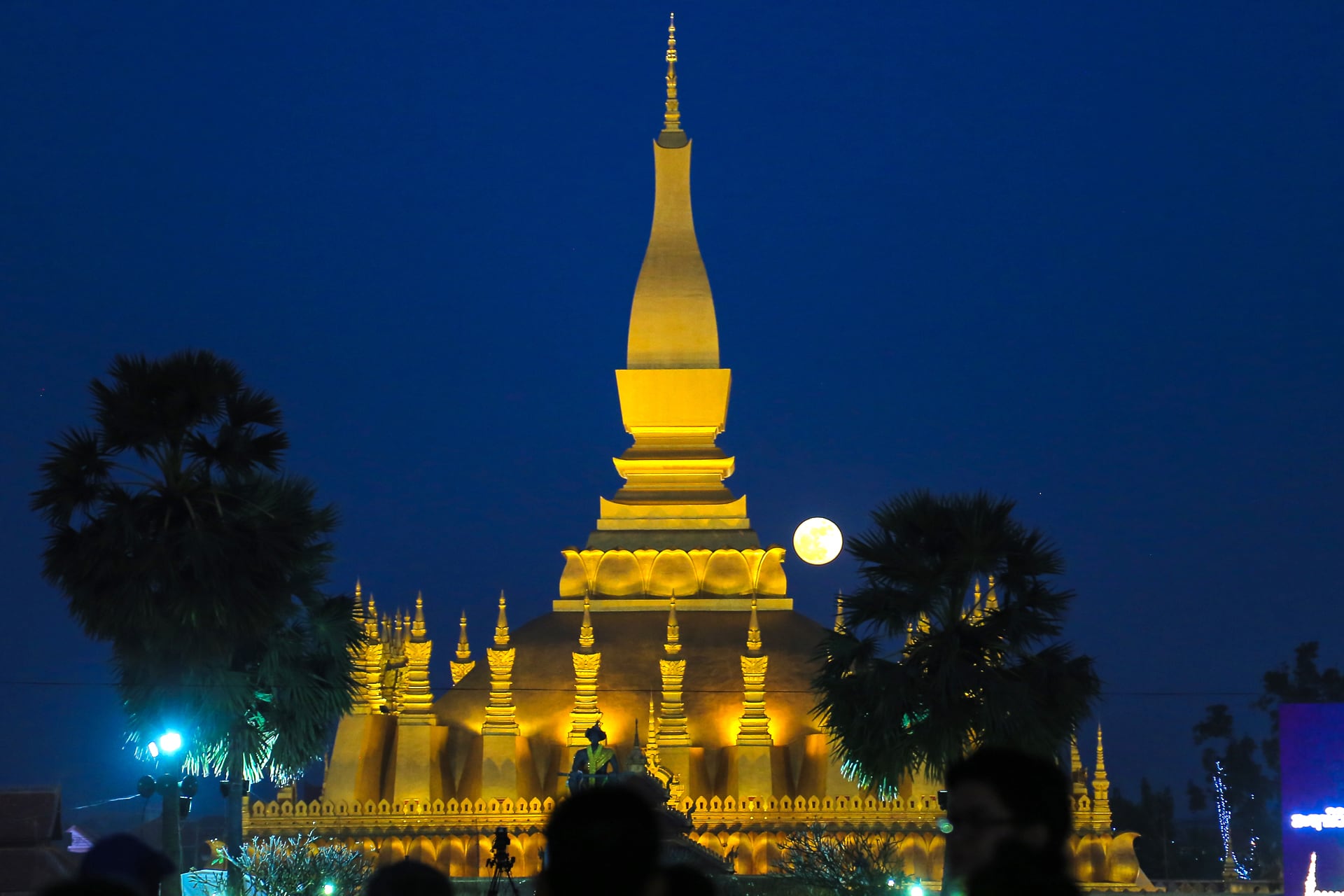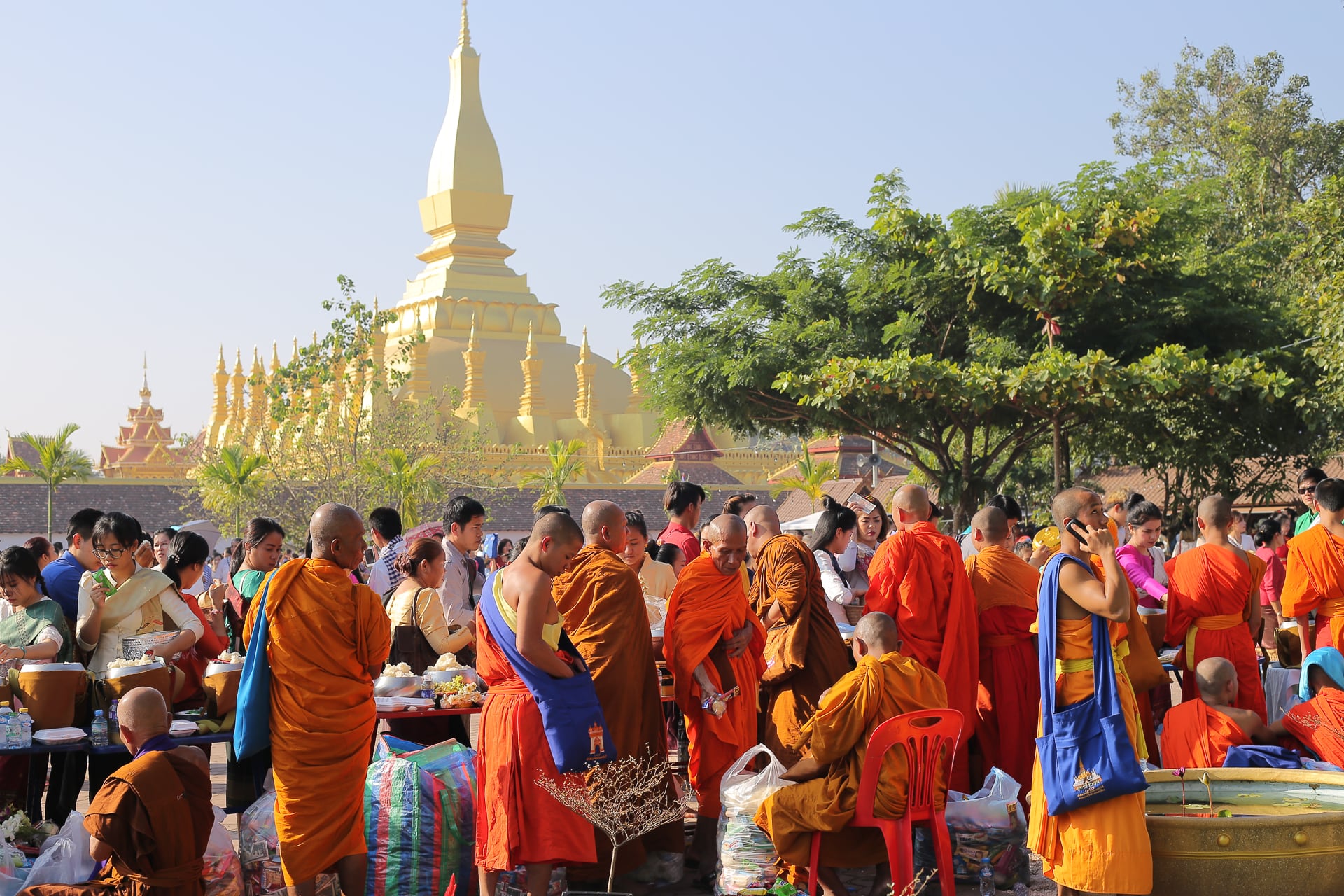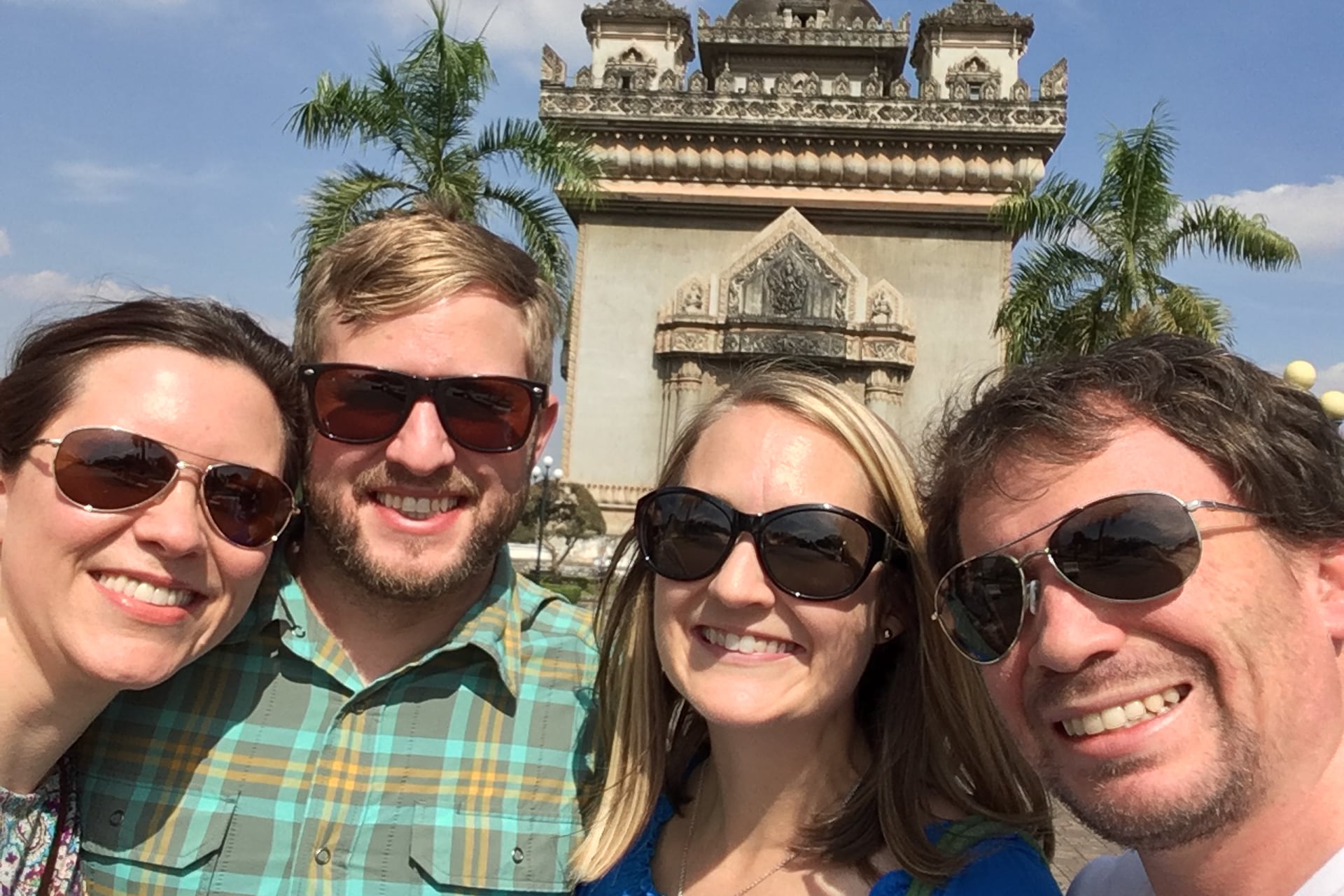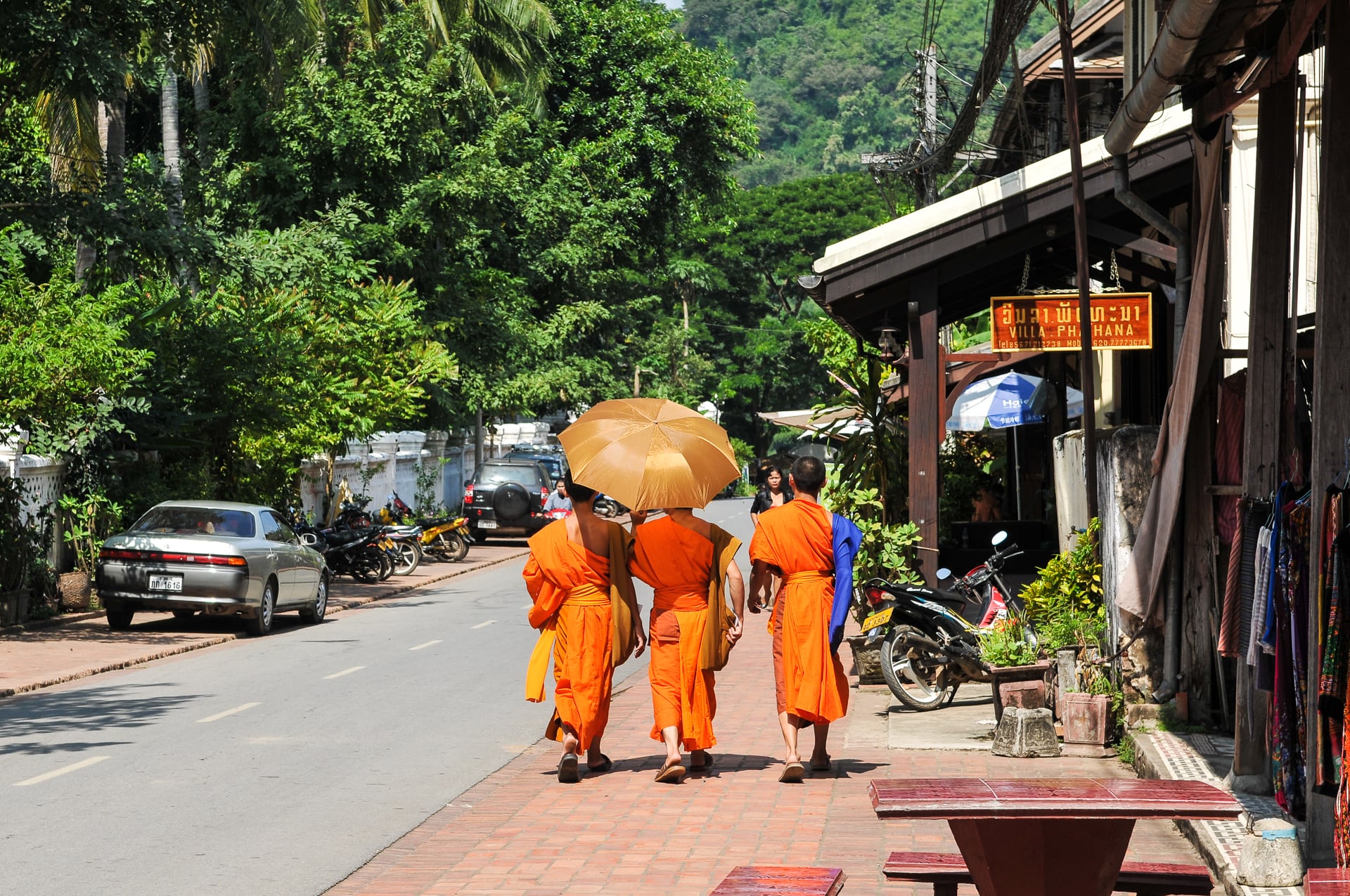Scenes from a very special night here in Vientiane — the final day of Boun That Luang (Festival of the Grand Stupa).
That Luang (pronounced TAHT lew-ONG) is perhaps the most iconic landmark in Laos, appearing on everything from Laotian currency to tourism marketing materials.
Stupas such as That Luang are found throughout the Buddhist world. The most important ones are shrines to relics of Buddha. That Luang, is sanctuary to Buddha’s hair and breast bone (sternum). In addition to its religious significance, That Luang is a symbol of the resiliency of the Laotian people and nation, as it’s long history — much like the nation’s — is one of constant cycle of triumph and turbulence.
The Festival of the Grand Stupa, in many ways, is a celebration of both its religious and historical significance, as well as a celebration of the nation itself.

Originally built as a Hindu temple in the 3rd century, its essence was forever changed when Buddhist missionaries brought the holy breast bone relic to the stupa after the death of Buddha. The stupa eventually fell into ruin until the 13th century when it was rebuilt as a Khmer temple, which also fell into ruin in the coming centuries. When the king of Luang Prabang moved his capital to Wieng Chan (Vientiane) in the 16th century, he ordered the relocation and reconstruction of That Luang 4km from the city center. However, moving the stupa did not improve its odds of survival, as it was plundered and raided repeatedly by the Burmese, Siamese and Chinese from the mid-17th to mid-19th centuries. It was eventually abandoned until the French restored its original design in 1900, though this was unsuccessful and had to be reconstructed in the 1930s. Again, the stupa was heavily damaged during the Franco-Thai War, but finally reconstructed to what we see today after the end of World War II.
I dare you to find another landmark anywhere else in the world that has such long and tumultuous history.

A folk heritage temporary exhibit constructed just for this occasion.

That Luang festival lasts three days, starting with a Phasat Pheung (wax castle) procession (we’ll see some of those in a bit), culminating with Tak Bat (offering to the monks) in the morning — and procession around the stupa in the evening — of the final day.
We’re here on the evening of the final day for the procession.

After entering the inner sanctum, devotees — carrying incense and candles — circle the stupa (clockwise) three times in honor of Buddha. Women are required to wear a sin (Lori was able to rent one just outside the gate for the occasion).



Accumulation of offerings from three days of festivities.







After the procession, families gather at food stalls to eat Khao Poun, the national rice noodle soup dish.

Devotees pause to write their hopes and wishes for the coming year on a piece of paper to be blessed by the presiding monks.


Outside of the stupa walls, the celebrations are quickly ramping up, with carnival rides and games, musical acts, and food. Meanwhile, live shots from inside the stupa walls are broadcast to the revelers on the outside.

All the while, the super moon rises just over That Luang. Serious awesomeness.







